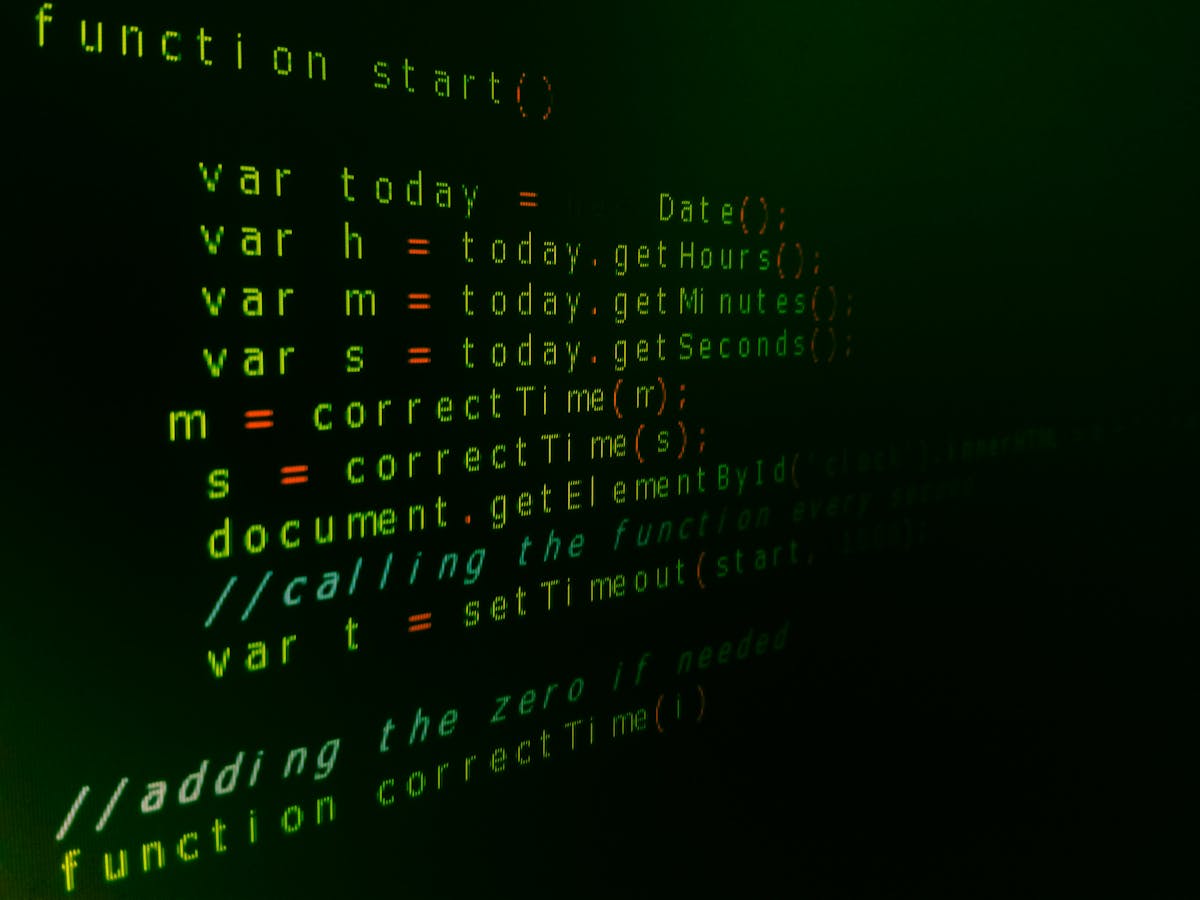Everything About Full-Stack Advancement: Discovering Its Function in Efficient Software Program Engineering
Full-stack advancement has become a keystone of modern software application engineering. By incorporating front-end and back-end modern technologies, it produces cohesive web applications. This approach not just improves individual interfaces however likewise reinforces server-side functionality. As the need for adaptable designers rises, understanding the subtleties of full-stack growth ends up being vital. What exactly does this entail, and what implications does it hold for the future of software program engineering?
Understanding Full-Stack Development
Full-stack growth includes the total range of web growth, incorporating both front-end and back-end innovations. This multidisciplinary strategy permits programmers to create fully functional web applications, handling whatever from interface style to server monitoring. Full-stack designers have an extensive capability, allowing them to browse different layers of an application, consisting of data sources, server-side logic, and client-side interactions.Understanding the full-stack development process involves identifying the value of customer experience and application efficiency. Developers have to think about exactly how these components communicate, guaranteeing a seamless experience for users. Additionally, full-stack development promotes partnership among groups, as developers can connect effectively across disciplines. aether group dubai. This flexibility not just improves process but additionally enhances analytical capacities. In a significantly digital world, the demand for full-stack developers remains to grow, highlighting their critical role in the software application design landscape
Secret Technologies in Full-Stack Advancement
The landscape of full-stack advancement is specified by a range of crucial modern technologies that equip designers to develop robust web applications. On the front end, preferred frameworks like React, Angular, and Vue.js help with the development of vibrant individual interfaces. These tools enable programmers to improve and develop receptive layouts customer experiences.On the backside, Node.js, Django, and Ruby on Rails are widely utilized for server-side growth, enabling reliable handling of data source communications and server logic. Data sources such as MongoDB and PostgreSQL are crucial for data storage and retrieval.APIs are important in linking the front end and back end, enabling seamless information exchange. Furthermore, variation control systems like Git are crucial for handling code changes and collaboration among development groups. Collectively, these innovations create a substantial toolkit that allows full-stack designers to provide high-quality applications effectively.
Benefits of Being a Full-Stack Designer
A profession as a full-stack programmer uses countless advantages that attract both novices and experienced experts. One considerable advantage is the versatility to work on both front-end and back-end innovations, enabling developers to develop all-encompassing remedies. This dual ability improves problem-solving capabilities, allowing them to resolve concerns throughout the entire pile efficiently.Additionally, full-stack designers commonly enjoy better job chances, as their varied skills make them valuable possessions to companies looking for to simplify advancement procedures. The ability to comprehend and manage whole tasks cultivates enhanced partnership within teams, leading to a more natural workflow.Moreover, full-stack programmers have a tendency to regulate higher salaries as a result of their substantial knowledge. Continual learning is an additional perk, as they frequently engage with numerous innovations and structures, maintaining their skills appropriate. Ultimately, the duty of a full-stack programmer is gratifying and vibrant, using a satisfying career course for those that accept it.
The Full-Stack Development Process
While maneuvering through the full-stack development procedure, programmers participate in a series of structured phases that guarantee the production of durable applications. Needs celebration is important, as it lays the structure for recognizing individual demands and job purposes. This is followed deliberately the application style, where the total structure, technologies, and structures are chosen to accomplish the requirements.Next, designers shift to the front-end and back-end advancement stages, where they produce customer interfaces and server-side reasoning, specifically. Examining is an integral stage that validates efficiency, capability, and security, addressing possible pests and problems prior to deployment.Finally, the release phase includes launching the application and monitoring its performance in an online atmosphere. Throughout this iteration, feedback and procedure loops are vital, enabling for constant renovation and adjustment to transforming requirements. This organized strategy facilitates the growth of effective, scalable, and maintainable applications.

Cooperation Between Front-End and Back-End Teams
Efficient cooperation in between front-end and back-end groups is important for successful full-stack advancement. Solid interaction, using shared tools and i thought about this innovations, and dexterous partnership methods can greatly boost operations and project end results - aether group dubai. By cultivating a cohesive working relationship, groups can better align their initiatives and provide a smooth user experience
Importance of Communication
Effective cooperation in between front-end and back-end groups depends upon clear and consistent communication. This communication is essential for straightening project timelines, expectations, and objectives. When front-end programmers understand the back-end architecture and vice versa, they can develop a lot more useful and natural applications. Routine conferences and updates assist in the exchange of ideas, allowing teams to attend to possible issues early in the growth process. In addition, effective communication fosters a joint setting, motivating team members to share insights and comments, inevitably resulting in cutting-edge solutions. By prioritizing interaction, groups can minimize misunderstandings, improve process, and improve general performance. Subsequently, the duty of interaction in full-stack development can not be overemphasized; it serves as the backbone of successful software program design tasks.
Shared Tools and Technologies
Clear communication sets the phase for utilizing shared devices and technologies effectively in full-stack advancement. This collaboration in between front-end and back-end teams hinges on the fostering of incorporated tools that enhance operations and enhance efficiency. Version control systems, such as Git, assist in seamless cooperation by permitting developers to track modifications and combine code efficiently. APIs offer as an essential bridge, enabling front-end and back-end parts to connect successfully. In addition, common advancement settings, like Docker, foster uniformity, allowing teams to function in an uniform configuration. directory By leveraging these shared tools, groups can reduce misconceptions and speed up the development procedure, ultimately bring about even more natural software program options that fulfill project needs and customer assumptions.
Agile Collaboration Practices

Common Challenges in Full-Stack Advancement
What challenges do full-stack developers run into as they browse the complexities of both front-end and back-end technologies? One noticeable obstacle is the fast evolution of structures and tools, which needs continuous understanding and adjustment. Programmers should remain updated with both front-end libraries, such as React or Angular, and back-end innovations like Node.js or Django, which can lead to skill spaces or understanding overload.Additionally, full-stack designers usually battle with workload management because of the comprehensive variety of duties. Stabilizing tasks in between customer interface style, server-side logic, and database monitoring can lead to time restraints and project delays.Collaboration and interaction within groups additionally existing hurdles, as full-stack developers should link the void between front-end and back-end teams, making sure alignment on project goals. Debugging throughout multiple layers of the pile can make complex issue resolution, taking in useful time and sources.
The Future of Full-Stack Growth
Technology in modern technology assures to form the future of full-stack development considerably. As companies increasingly embrace cloud computing and microservices designs, the need for full-stack designers who can seamlessly integrate front-end and back-end modern technologies is anticipated to expand. The surge of fabricated intelligence and device learning will likely influence growth practices, making it possible for a lot more efficient coding and automated testing processes.Moreover, the emergence of no-code and low-code platforms might redefine the duty of full-stack designers, permitting them to concentrate on higher-level design and style while simplifying regular jobs (niels denekamp linkmedia). This change might cultivate collaboration in between technological and non-technical employee, widening the scope of full-stack development.Additionally, the emphasis on cybersecurity will certainly cause the combination of protection techniques within the full-stack development lifecycle. Generally, the future of full-stack growth shows up intense, characterized by continual knowing and adaptation to an ever-changing technological landscape
Frequently Asked Concerns
What Educational Background Is Preferred for Full-Stack Developers?
The favored academic background for full-stack developers commonly includes degrees in computer science or software application engineering. Nevertheless, lots of effective programmers additionally emerge from coding bootcamps or self-taught experiences, highlighting functional skills over formal education.
How Do Full-Stack Developers Keep Updated With New Technologies?
Full-stack programmers stay updated with new innovations through continuous understanding using on-line courses, going to seminars and workshops, participating in community forums, following market blog sites, and explore new devices and frameworks in personal tasks.
Is Full-Stack Development Suitable for Beginners?
Full-stack development can be appropriate for beginners, as it provides a considerable understanding of both front-end and back-end modern technologies. However, the discovering contour may be high, requiring devotion and consistent technique to understand numerous abilities.
What Are Typical Profession Paths for Full-Stack Developers?
Usual occupation paths for full-stack designers consist of duties such as software engineer, internet programmer, technical lead, and project manager. Many also focus on details innovations or move into associated fields like product monitoring or user experience design.
Exactly How Does Full-Stack Development Differ From Standard Software Application Development?
Full-stack growth includes both front-end and back-end jobs, enabling developers to take care of entire projects. In comparison, traditional software growth frequently entails specific duties, focusing separately on either server-side or client-side elements of applications. Full-stack development incorporates the complete range of internet development, incorporating both front-end and back-end modern technologies. Full-stack developers have a wide-ranging skill collection, enabling them to navigate various layers of an application, consisting of databases, server-side logic, and client-side interactions.Understanding the full-stack advancement process involves identifying the importance of customer experience and application efficiency. Additionally, full-stack development cultivates partnership amongst groups, as designers can connect efficiently across disciplines. The landscape of full-stack development is specified by a variety of vital innovations that encourage programmers to build durable web applications. While navigating with the full-stack advancement process, programmers engage in a collection of organized stages that guarantee the creation of robust applications.
Comments on “Exploring the Impact of Code Automation on Dev Teams with niels denekamp aether”